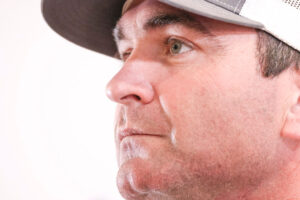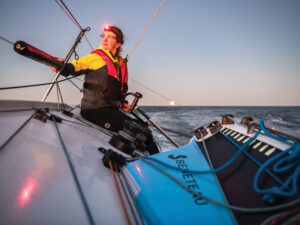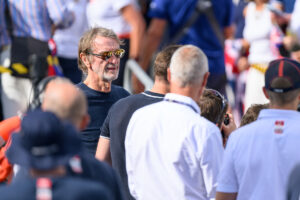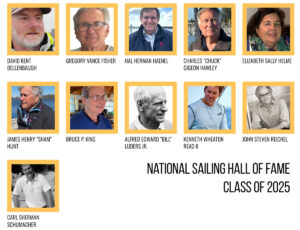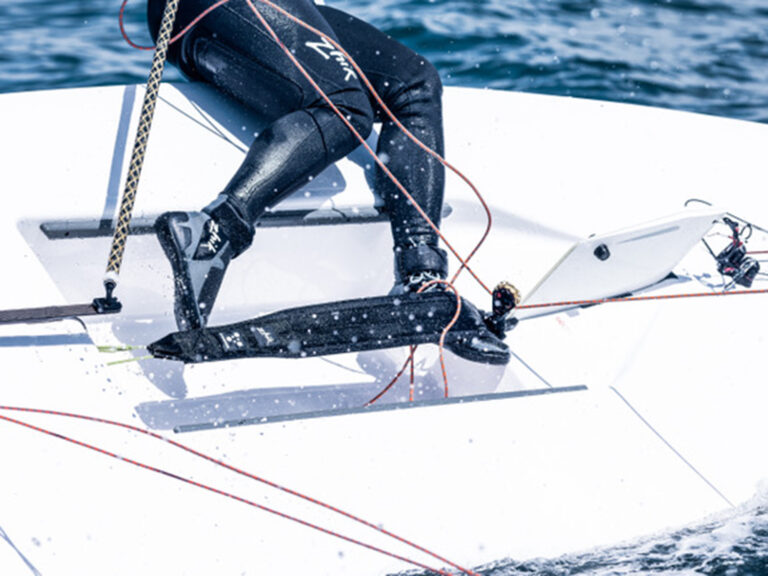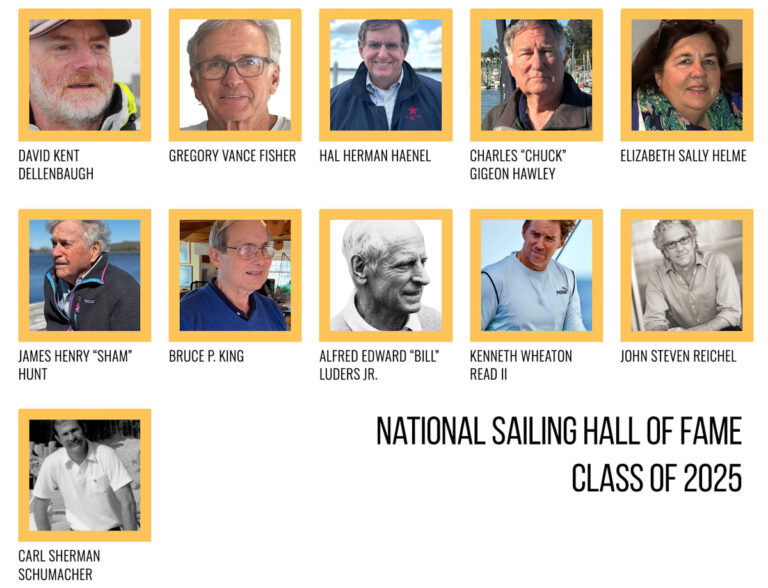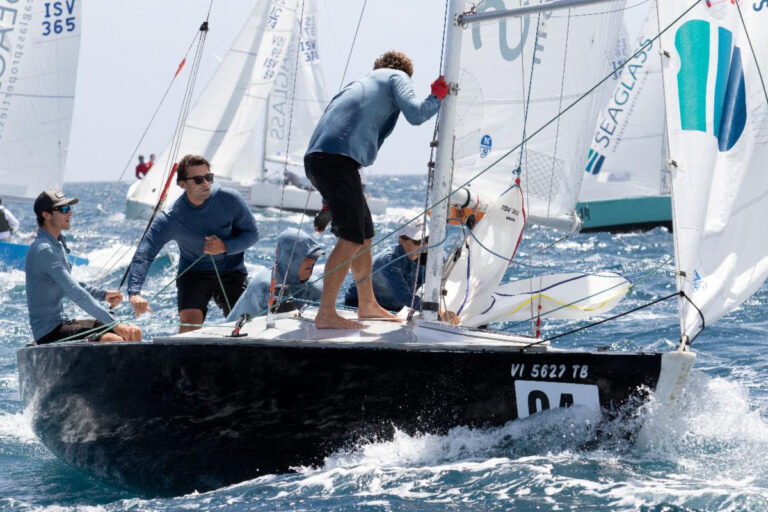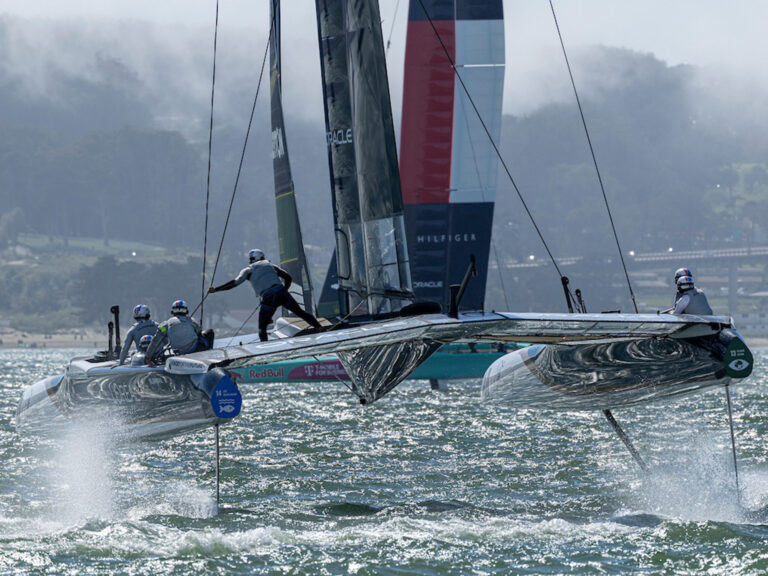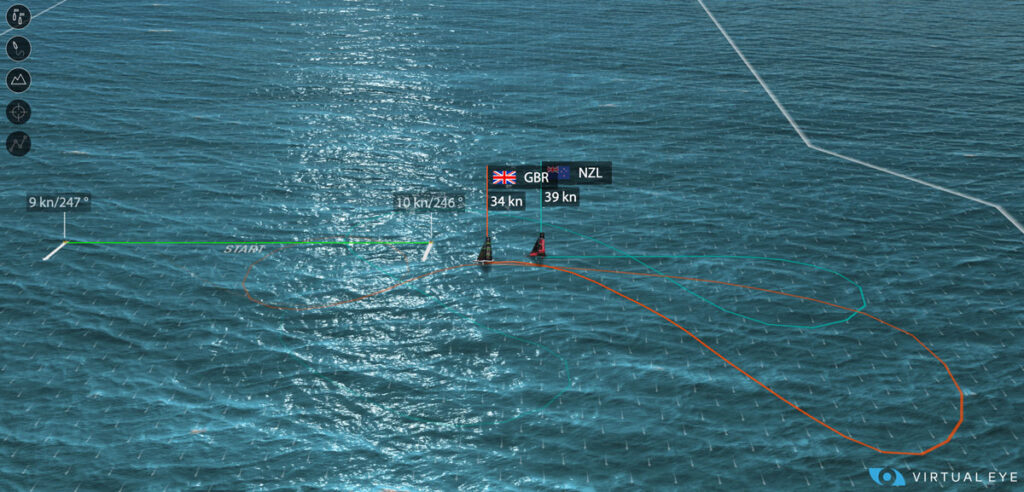
The 37th America’s Cup final between the Challenger, INEOS Britannia, and the Defender, Emirates Team New Zealand, is currently underway and revealing a few tactical trends over four races thus far. Let’s take a look at the key decisions teams must make and which strategies are being employed to attack from behind or defend when leading.
Pre-Start Positioning
At the press conference ahead of the 37th Match, a coin flip determined that Emirates Team New Zealand would start the first race on port, while INEOS Britannia would start on starboard. In the age of AC75s, where the priority is to remain on the foils, some of the traditional moves are no longer applicable.
In general, the boat that enters the start box on starboard 10 seconds later and from behind controls the pre-start and is better positioned to attack. Normally, if the starboard-entry boat executes standard pre-start maneuvers, it will end up to windward of its rival during the final starboard approach to the starting line. This gives it the power to decide how to proceed in the final seconds, based on its strategy and race plan.
Regardless of whether the boats approach from deep in the start box or higher than the starboard end of the line, the windward boat can choose whether to push the rival to bear away toward the leeward end, hook them from the leeward side, or stay far to windward to start on the right side, based on various tactical reasons. Only a few races in the Louis Vuitton Challenger Series saw the port-entry boat gaining decision-making power in the box, though this didn’t always materialize into a starting advantage.
After the start: Push to the Boundary or Split
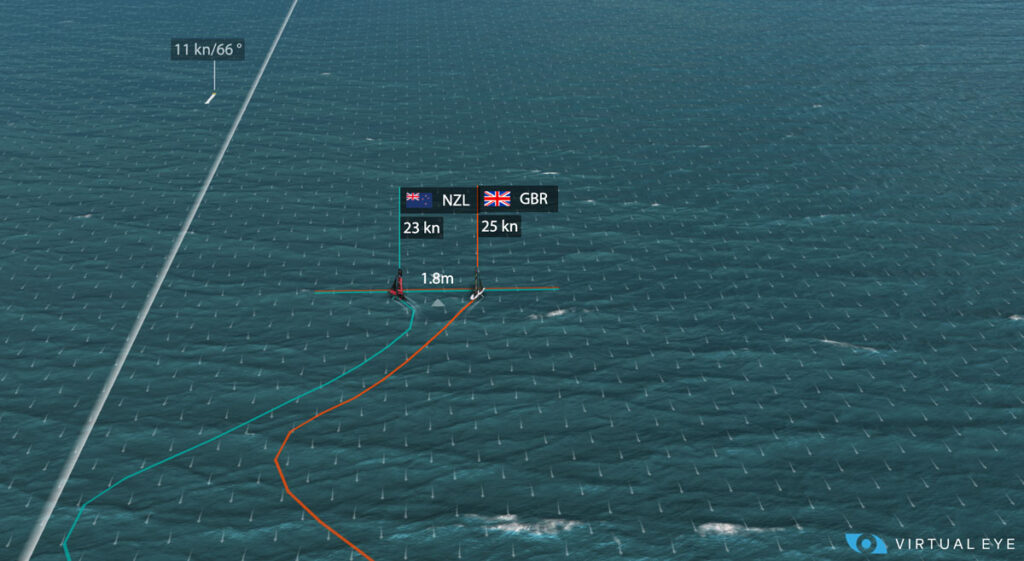
Starting to windward generally provides control, allowing the boat to either sail on starboard tack and push the opponent toward the left boundary, or execute an early tack to head toward the right side of the course for a strategic advantage, such as more wind or shift. The latter option is typically favored in southwesterly Garbi sea breezes, where the right side of the course often proves advantageous.
On the other hand, starting to leeward reduces the risk of a poor start, as no other boat can disrupt acceleration or changes in speed at one of the most critical moments of the race. Once across the line, the leeward boat can control its sailing mode toward the left boundary until the windward boat tacks. However, the distance from the start to the left boundary is much shorter than the one the leeward starting boat will have to face after the first tack on the left boundary, all the way to the opposite one.
Consequently, after the tack, the boat going for the leeward start, must commit and be confident that after the first tack will achieve a comfortable relative position to sail potentially from boundary to boundary. Being lifted from leeward by the opponent early after the first tack could result on two extra tacks when close to the port side boundary, that could result on irreversible differences in a very early stage of the race.
In the Louis Vuitton Cup Final, Luna Rossa Prada Pirelli often opted for a windward start, while INEOS preferred the leeward position. Both took advantage of their respective positions without much interference.
Upwind Tactics: Cover or Stay in Phase
Once a boat establishes a lead, the primary goal is to cover the opponent, either pushing them toward the unfavored side in terms of wind intensity, wind shifts phase or toward the nearest boundary, which could force them into two extra tacks on the upwind leg.
Meanwhile, the trailing boat aims to minimize damage by staying in sync with wind shifts and looking for an opportunity to create a split, either on the same upwind leg or during the top-mark rounding. Though a split often only requires one additional tack, if mistimed with the wind shift, it can lead to costly losses, so waiting for the right moment is crucial.
After the Top Mark: Downwind Tactics
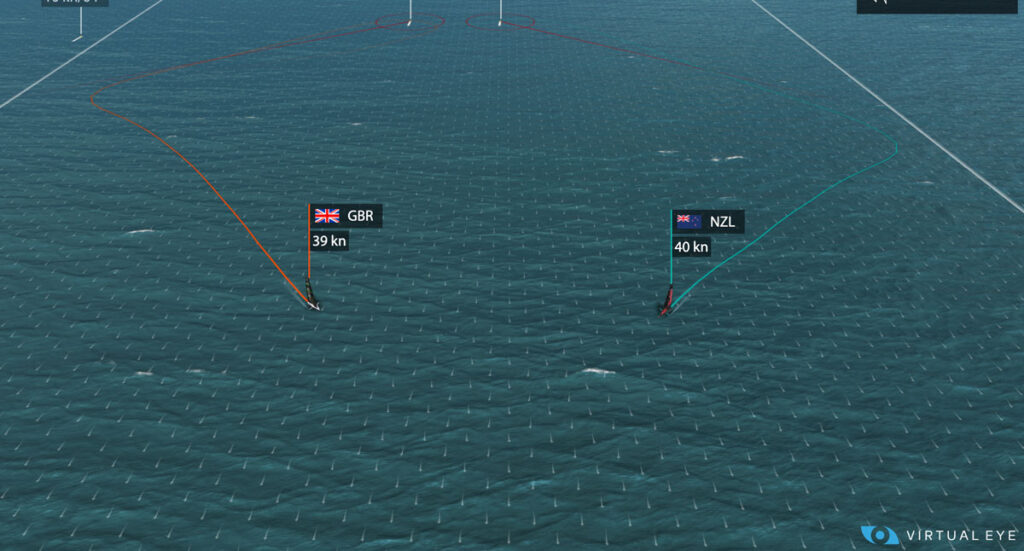
Downwind tactics depend on whether the trailing boat rounds the same top mark as the leader or a different one. If both round the same mark, the leader can simply mirror the trailing boat’s moves and stay between them and the next mark. The high speeds of foiling boats also mean the boat behind cannot disturb the leader’s clean wind.
However, if the trailing boat achieves a split at the top mark, and both head toward opposite boundaries, the leading boat will have to execute at least one extra jibe to align and regain control. In conditions where wind pressure and shifts vary across the course, this is a common strategy. In contrast, in strong winds and choppy seas, minimizing maneuvers becomes the priority, allowing for sailing from boundary to boundary with minimal interference from the opponent.
The Final Stages
By the second lap, one boat is usually clearly ahead, while the other attempts to create a split to gain leverage and increase the chances of a comeback. In windy or rough seas, the leader often avoids engaging directly, focusing on sailing cleanly from boundary to boundary, minimizing extra maneuvers and concentrating on boat handling.
In more variable conditions, staying close to the rival becomes more important, even if it means executing additional tacks.
Racing these high-speed foiling boats requires thinking two to three steps ahead before execution and anticipating multiple scenarios that could unfold during critical moments, especially when crossing paths with an opponent, easier said than done when the world is watching, the racecourse is small, and the pace is rapid.

